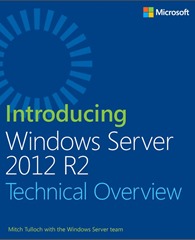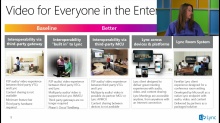Today the Exchange Team released Rollup 3 for Exchange Server 2010 Service Pack 3 (KB2891587).
You can download RU3 here:
Update Rollup 3 For Exchange 2010 SP3 (KB2891587)
This update raises Exchange 2010 version number to 14.3.169.1.
Today the Exchange Team released Rollup 3 for Exchange Server 2010 Service Pack 3 (KB2891587).
You can download RU3 here:
Update Rollup 3 For Exchange 2010 SP3 (KB2891587)
This update raises Exchange 2010 version number to 14.3.169.1.
CU3 for Microsoft Exchange Server 2013 was released yesterday 11/25/2013
File about 1,5 GB can be downloaded here:
Cumulative Update 3 for Exchange Server 2013 (KB2892464)
After instalation of CU3 your Exchange Server 2013 version number will be 15.0.775.38
The following new enhancements and improvements to existing functionality have also been added for Exchange Server 2013 customers:
The Exchange Team Blog announced that service pack 1 for the Exchange Server 2013 will be available in early 2014.
Probably this mean Q1 of 2014.
SP1 for Exchange Server 2013 will include below improvements:
SP1 will require to update Active Directory schema.
Active Directory Schema updates for Exchange are additive and always backwards compatible with previous releases and versions
SysTools® OST Recovery v4.1 – Product Review
People who work with the Outlook profile may know that Outlook store the information collected from emails, contacts and other category to the PST file. Other than the PST file, Outlook provides OST format to save the information, when Exchange runs offline. OST file aka Offline Storage Table is created when user work with Outlook in offline mode or Outlook Cached Exchange mode. This facility to work offline helps user to utilize the time for work even when deprived of Exchange connection. OST file can be synchronized with the Exchange server once connection is available again.
If any issues arise when the OST to Exchange synchronization is in process then it can be assumed that OST file is corrupted. Some of the error messages like “Unable to expand the folder, the set of folders could not be opened. Errors could have been detected in the file xxxx.ost. Quit all mail-enabled applications and then use the Inbox Repair Tool” is displayed to refer the corruption issues. Employing the steps as per instruction may or may not help to recover OST file, thus the perfect method to recover OST file from corruption is to convert OST to PST using SysTools® OST Recovery tool.
The software is highly appreciated because of certain cases reported with the OST file such as user cannot convert OST file directly to PST file because of the security issues that comes in between Exchange mailbox, OST and MAPI profile all together. User can neither rename OST file to PST nor open OST file with any other MAPI profile ( for that user have to be logged in to the original MAPI profile). SysTools® OST Recovery tool turns to be a great help for user who faces the trouble in accessing the OST file because the tool works to recover and convert OST to PST even in absence of MS Exchange.
How OST Recovery Software Work?
To recover OST file from any type of corruption or inaccessibility issues, SysTools® OST Recovery tool brings the best steps to be executed as:
The November Update for Lync 2013 Desktop Client introduced new features.
These features work out of the box from a client perspective, your administrator may have to enable/change settings on the server side for you to get the functionality shown below.
Features included in the November Update:
In the IM window new update add capability to view photos of the sender/receiver inline with the conversation. Unfortunately you can’t disable this feature. I think this is waste of space in IM window, and I would like to disable it but I can’t.
You can download update here:
You can find new Documentation Help File for Microsoft Lync Server 2013 on Download Center.
The updated file includes all changes made to topics in the Lync Server TechNet Library since the release of Lync Server 2013, including bug fixes and updates from community and customer feedback.
File can be downloaded here:
Microsoft Press Blog published information about new book Introducing Windows Server 2012 R2.

This book is available now for free in PDF file.
This book is intended to provide you with an overview of the new features and enhancements introduced in Windows Server 2012 R2. The intended audience for this book is IT pros who deploy, manage, and maintain Windows Server workloads in data center, private cloud, and hosting provider environments
Book is available here:
Introducing Windows Server 2012 R2
Inside you can find information about:
When you need to find all disabled Active Directory accounts which belong to any distribution group, then you can use Exchange Management Shell and below command:
$groups = Get-DistributionGroup -ResultSize Unlimited
$report = foreach($group in $groups){
Get-DistributionGroupMember $group |
?{$_.RecipientType -like '*User*' -and $_.ResourceType -eq $null} |
Get-User | ?{$_.UserAccountControl -match 'AccountDisabled'} |
Select-Object Name,RecipientType,@{n='Group';e={$group}}
}
$report | Export-CSV d:\scripts\disabled_group_members.csv -NoType
Channel9 website published new Lync 2013 sessions, this time from Ignite sessions.
You can see them here Channel9.msdn.com
Below we present all modules:
 Configuring Lync Room System 50 minutes, 43 seconds
Configuring Lync Room System 50 minutes, 43 seconds
Lync Room System is a new member of the Lync family and offers a native Lync solution for meeting rooms that makes meetings easy to start, easy to manage, and easy to collaborate with remote attendees. This course introduces Lync Room System and describes how to deploy, configure, and manage it
What’s New in Meetings and Collaboration in Lync 1 hour, 25 minutes, 15 seconds
This course explores the latest additions in Lync 2013 related to meetings and collaboration, as well as improvements introduced in Lync updates released since Lync 2013 RTM, such as video cropping control, Meetings View, Q&A manager, and others. It also describes forthcoming approaches…